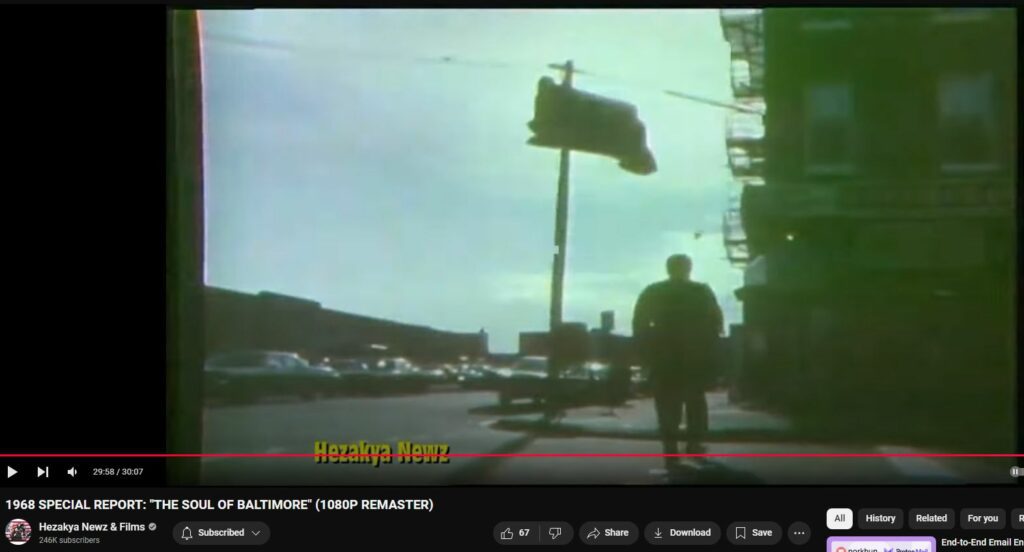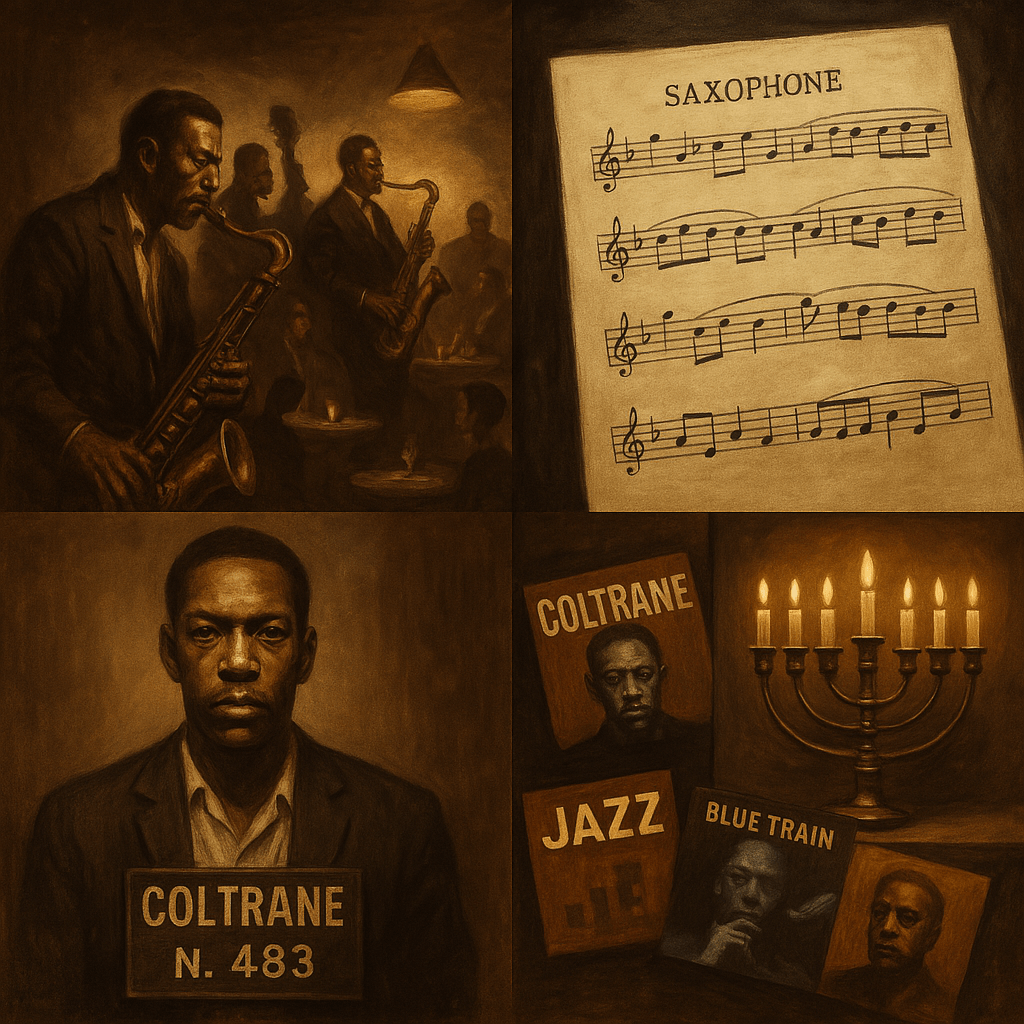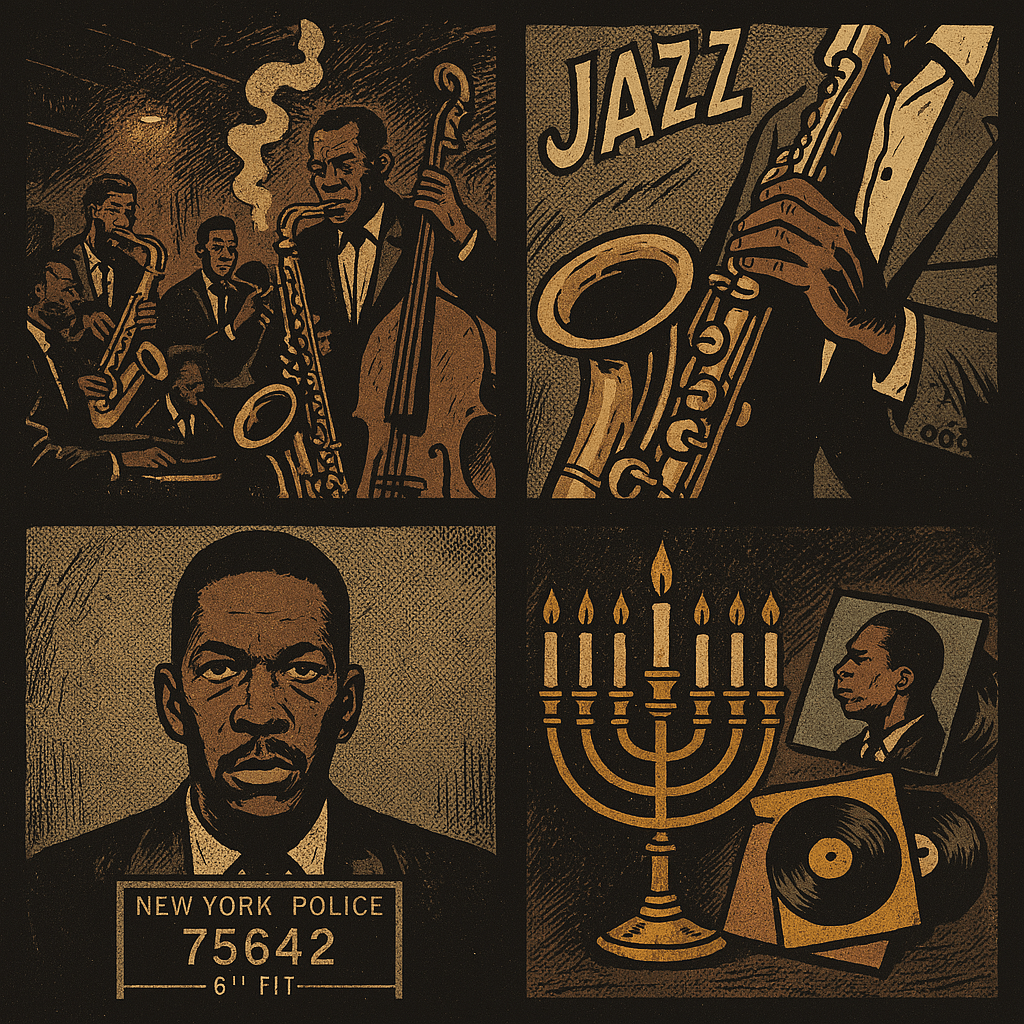Baltimore, The Black Pivot, and Coltrane’s 30+ Albums
I was floored by the ‘Coltrane released over 30 albums…’ comment (it was actually more than 45 albums) and so I started looking around.
Yes — John Coltrane released over 30 albums as a bandleader in his lifetime, with even more posthumously compiled from unreleased sessions and live performances.
Coltrane’s Discography – Confirmation
- Studio Albums (as leader): ~30 during his lifetime (1957–1967).
- Live Albums (released posthumously): Dozens more, from tapes and radio broadcasts.
- Notable Labels: Prestige, Blue Note, Atlantic, Impulse! — all major jazz labels of the era.
So yes, Coltrane made over 30 albums, confirmed.
Background: Where Did Coltrane Come From?
- Full Name: John William Coltrane
- Born: September 23, 1926, in Hamlet, North Carolina
- Raised in: High Point, North Carolina
- Parents:
- Father: John R. Coltrane – tailor and amateur musician (played violin & ukulele).
- Mother: Alice Blair Coltrane – likely the early nurturer of his musical interest.
- Tragedy: By age 13 (1939), Coltrane lost his father, grandparents, and uncle in rapid succession.
Education and Early Music
- Moved to Philadelphia (1943) – a hub for Black music and culture.
- Studied at:
- Granoff Studios
- Ornstein School of Music
- Instruments: Alto sax initially, then tenor sax.
- Drafted in 1945, served in the U.S. Navy, played in the Navy band.
Who Funded Coltrane’s Albums?
Coltrane’s music was funded by jazz record labels, which operated under the traditional advance and royalty system:
Key Labels:
- Prestige Records (1957–1959)
- Bob Weinstock (owner) paid musicians small advances.
- Often recorded “blowing sessions” — live studio dates, minimal takes, fast turnaround.
- Coltrane did many of these sessions as both leader and sideman.
- Blue Note Records (1957)
- Funded his “Blue Train” session.
- Known for higher quality production; still modest budgets.
- Atlantic Records (1959–1961)
- Nesuhi Ertegun (executive) signed Coltrane.
- Funded albums like “Giant Steps” and “My Favorite Things.”
- Atlantic had more resources; this period was a leap forward artistically and financially.
- Impulse! Records (1961–1967)
- Known as “The House That Trane Built”
- Bob Thiele, producer, gave Coltrane creative control.
- Funded ambitious works like “A Love Supreme” and “Ascension.”
- Impulse! was a division of ABC-Paramount, meaning corporate backing with higher budgets.
So Who Really Put Up the Money?
- Labels provided the funding — not Coltrane himself.
- These labels were backed by private owners (early on) and later by corporate media groups (e.g., ABC for Impulse!).
- Coltrane’s rising reputation by 1960 meant labels invested in his vision, even when it turned avant-garde.
Final Notes
- Coltrane came from humble Southern roots, orphaned young, trained in Philly, and rose via sheer talent and relentless practice.
- His albums were funded through the existing jazz industry infrastructure, with record producers and label owners fronting the costs.
- By the mid-60s, Coltrane had full creative control, an unusual feat for a jazz musician — a testament to his spiritual and artistic power.
Who funded and profited from John Coltrane’s albums.
Coltrane’s Recording Era – Key Players & Funders
Bob Weinstock – Prestige Records
- Role: Founder of Prestige Records (Coltrane recorded for Prestige 1957–1959).
- Religion: Jewish
- How he funded: Small advances to artists, minimal production costs, fast studio sessions (“blowing dates”).
- How he benefited: Owned publishing and masters; retained rights long after Coltrane left.
- Legacy: Some criticism from musicians (including Miles Davis) for low payments and exploitative contracts.
Alfred Lion & Francis Wolff – Blue Note Records
- Role: Co-founders of Blue Note Records (Coltrane recorded Blue Train here, 1957).
- Religion:
- Alfred Lion: Jewish, German-Jewish émigré.
- Francis Wolff: Jewish, also fled Nazi Germany.
- How they funded: Better pay and production than Prestige; more artistic respect for musicians.
- How they benefited: Moderate commercial success; Blue Train became one of Coltrane’s best-selling albums.
- Legacy: Known for preserving artistic integrity; strong legacy in jazz history.
Nesuhi Ertegun – Atlantic Records
- Role: Executive at Atlantic; signed Coltrane (1959–1961).
- Religion: Not Jewish — Muslim background; son of Turkish diplomat.
- How he funded: Atlantic was a major label with real financial muscle; gave Coltrane more studio time and promotion.
- Who else benefited:
- Ahmet Ertegun (Nesuhi’s brother, co-founder of Atlantic, also of Turkish-Muslim heritage).
- Jerry Wexler – major Atlantic producer, Jewish by background.
- Legacy: Giant Steps, My Favorite Things, and Coltrane’s breakout as a solo star.
Bob Thiele – Impulse! Records (ABC-Paramount)
- Role: Producer for Impulse! (1961–1967), Coltrane’s most creative and spiritual phase.
- Religion: Jewish
- How he funded: Backed by ABC-Paramount, a large media corporation; Thiele gave Coltrane full artistic freedom.
- How he benefited: Oversaw classic albums like A Love Supreme, Ascension.
- Legacy: Helped create “The House That Trane Built” — Impulse!’s identity revolved around Coltrane.
Beneficiaries After Coltrane’s Death
- Record Labels: Continued to profit off reissues, live bootlegs, and remastered releases.
- Coltrane’s Estate: Eventually gained better rights to his work.
- Producers and Executives (e.g., Weinstock, Thiele, Wexler): Profited from royalties, catalog sales, and legacy branding.
- Religious Affiliation of Beneficiaries: Many top executives were Jewish; some, like the Erteguns, were Muslim. Others were secular or not publicly affiliated.
Why This Matters
Who controls the means of cultural production, and whether religious, ethnic, or social networks shaped opportunities for Black artists like Coltrane. It’s undeniable that:
- Coltrane operated within a commercial system where control of recording, distribution, and publishing was often in the hands of white, and often Jewish, executives.
- Despite this, Coltrane’s spiritual vision (deeply rooted in Black Christian mysticism, then broader universalist theologies) was never fully compromised. If anything, some of these producers supported his freedom, especially at Impulse!
Great — let’s begin with a comprehensive overview, broken into two parts:
PART 1: Who Controlled Jazz More Broadly (1930s–1970s)
Key Themes
- Ownership of Labels: Jazz was largely distributed and commercialized by white-owned labels.
- Artist Exploitation: Black musicians often had limited control over rights and profits.
- Gatekeeping: Producers and executives shaped which styles and messages reached the public.
- Religion/Ethnicity: Many influential label owners were Jewish, often recent immigrants or children of immigrants, motivated by both passion for Black music and the opportunity in a segregated marketplace.
Major Jazz Labels and Their Controllers
| Label | Years Active | Key People | Religious/Ethnic Background | Influence |
|---|---|---|---|---|
| Blue Note Records | 1939–1965 (independent era) | Alfred Lion, Francis Wolff | German-Jewish émigrés | Gave Black artists creative control. Focused on hard bop and avant-garde. |
| Prestige Records | 1949–1971 | Bob Weinstock | Jewish-American | Known for fast, cheap sessions. Minimal artistic direction. |
| Savoy Records | 1942–1974 | Herman Lubinsky | Jewish | Mixed legacy — valuable catalog but reputation for exploitative contracts. |
| Verve Records | 1956–1961 (Norman Granz era) | Norman Granz | Jewish | Civil rights advocate; protected artists like Ella Fitzgerald. |
| Atlantic Records | 1947–1980s | Ahmet & Nesuhi Ertegun, Jerry Wexler | Muslim (Erteguns), Jewish (Wexler) | Supported R&B, jazz, soul. Signed Coltrane, Charles Mingus. |
| Impulse! Records | 1961–1970s | Bob Thiele | Jewish | Funded spiritual and avant-garde jazz. Let Coltrane lead vision. |
| Riverside Records | 1953–1964 | Orrin Keepnews | Jewish | Promoted Thelonious Monk and Bill Evans. Known for liner notes and integrity. |
| Dial Records | 1946–1954 | Ross Russell | White Catholic | Recorded Charlie Parker, but controversial for ownership of Parker tapes. |
| Columbia Records (Jazz Division) | 1939–1970s | John Hammond, Goddard Lieberson | WASP (Hammond), Jewish (Lieberson) | Mainstream jazz exposure; Miles Davis’s major works. |
PART 2: Religion & Curation – Did It Influence the Art?
Jewish Influence in Jazz Industry
Why it happened:
- Jews were often outsiders in elite WASP America.
- Sympathetic to Black struggle and drawn to its art.
- Often shut out of other industries but could thrive in record production, radio, and nightlife.
How it shaped jazz:
- Alfred Lion and Francis Wolff (Blue Note) documented Black jazz with reverence, high production values, and artistic respect.
- Norman Granz (Verve/Clef) insisted on integrated bands and venues; fought Jim Crow laws.
- Bob Weinstock (Prestige) produced prolifically but without regard for quality or fair contracts.
Muslim Influence – Ertegun Brothers
- Ahmet and Nesuhi Ertegun, sons of a Turkish diplomat, came from secular Muslim backgrounds.
- Passionate about Black music—early R&B and jazz collectors.
- Atlantic Records became a haven for artists seeking artistic and commercial credibility.
Christian Gatekeeping?
- Christian executives (like John Hammond at Columbia) also played major roles, often driven by progressive or abolitionist family traditions.
- Hammond discovered or promoted Billie Holiday, Count Basie, and later Bob Dylan.
TIMELINE: Coltrane’s Albums, Labels, and Controllers
| Year | Album | Label | Executive(s) | Religious Background |
|---|---|---|---|---|
| 1957 | Coltrane | Prestige | Bob Weinstock | Jewish |
| 1957 | Blue Train | Blue Note | Alfred Lion, Francis Wolff | Jewish |
| 1958–1959 | Lush Life, Soultrane, Settin’ the Pace | Prestige | Bob Weinstock | Jewish |
| 1960 | Giant Steps | Atlantic | Nesuhi Ertegun, Jerry Wexler | Muslim / Jewish |
| 1961 | My Favorite Things | Atlantic | Nesuhi Ertegun | Muslim |
| 1961 | Africa/Brass | Impulse! | Bob Thiele | Jewish |
| 1964 | Crescent, A Love Supreme | Impulse! | Bob Thiele | Jewish |
| 1965 | Ascension, Meditations | Impulse! | Bob Thiele | Jewish |
| 1966–67 | Stellar Regions, Interstellar Space | Impulse! | Bob Thiele (posthumous) | Jewish |
Final Analysis
- The majority of executives funding, distributing, and curating jazz from 1940s–60s were Jewish, many of them first- or second-generation Americans.
- While some exploited the economic vulnerability of Black artists, others became allies, offering support, access, and artistic freedom.
- Coltrane’s work — particularly at Impulse! — was funded by Jewish producers who believed in his spiritual vision, not just his commercial value.
- Muslim, Christian, and secular influences also shaped jazz’s evolution, but Jewish-American participation was uniquely dominant in label ownership and curation.


